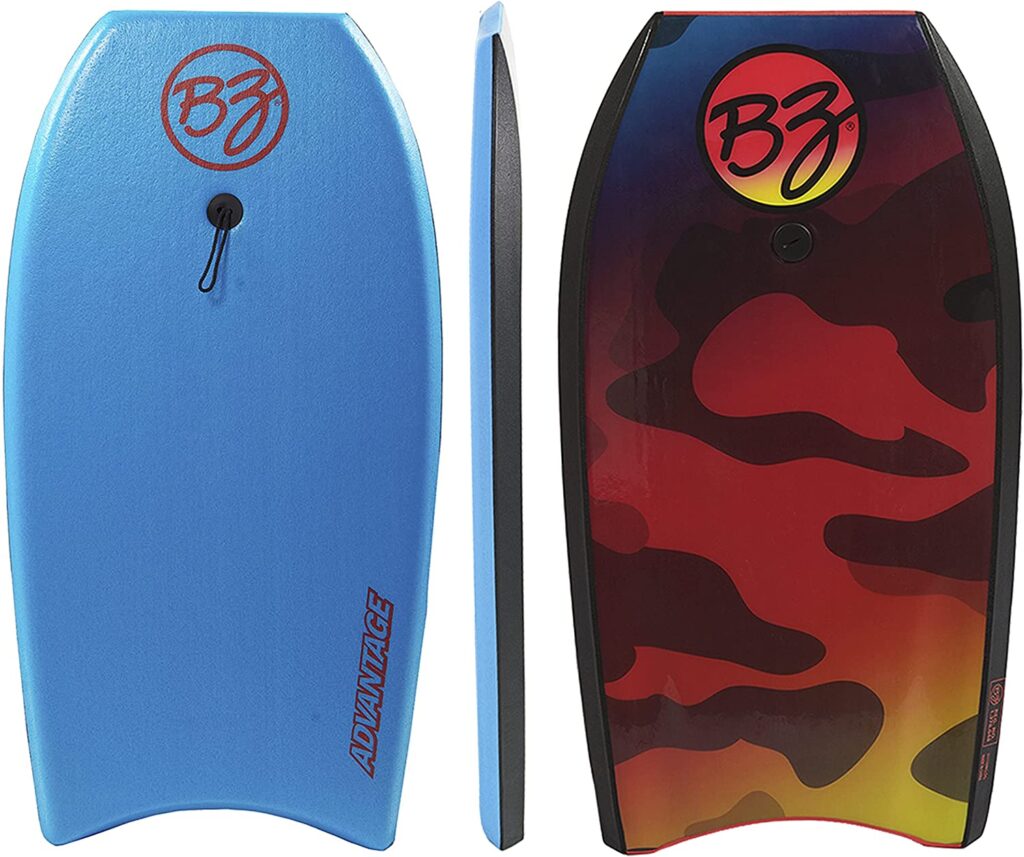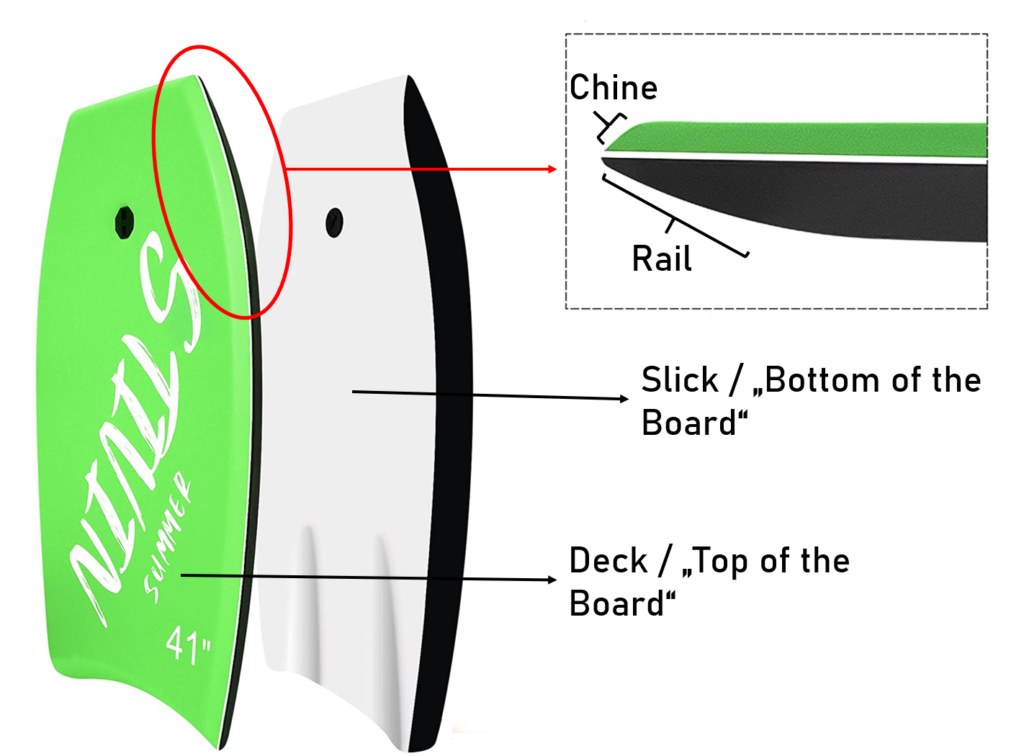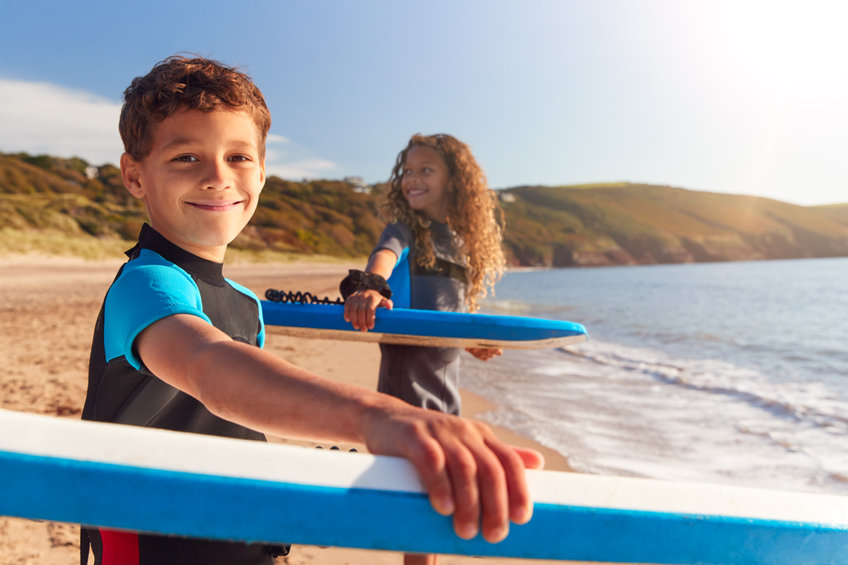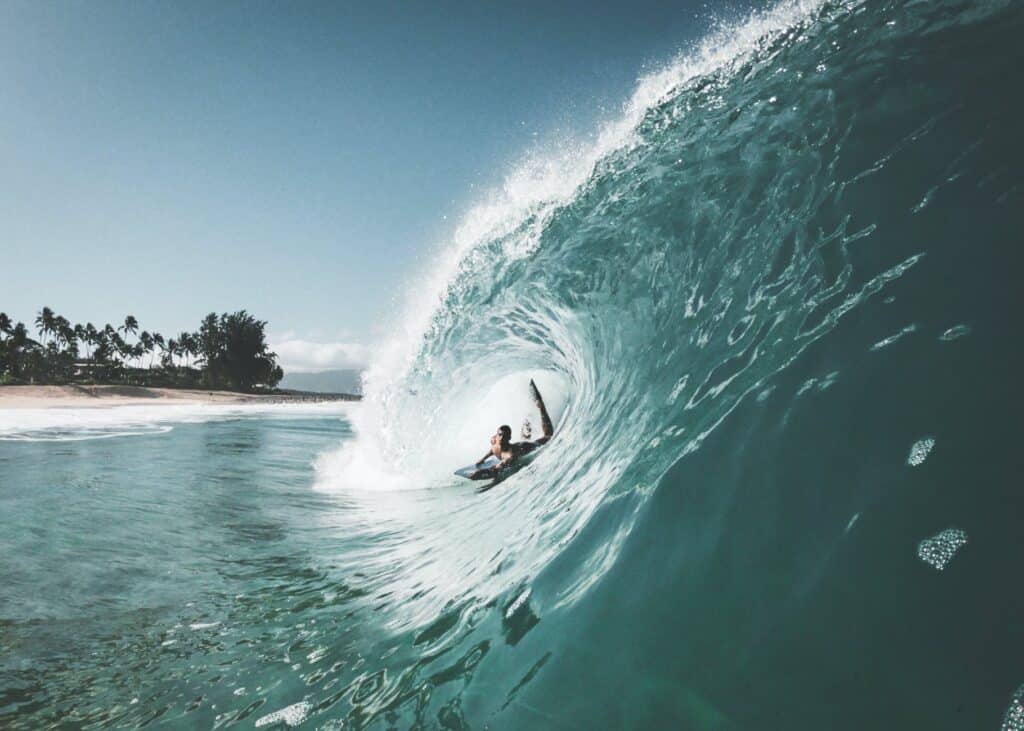The anatomy of a bodyboard can be quite confusing, especially when you see a bodyboard for the first time. Are you wondering why the bodyboard’s edges are angled? We’ve done the research and know exactly why bodyboards look the way they do!
A bodyboard has a number of different angled edges to help with hydrodynamics and the ability of the board to carry the rider easily. This is accomplished by the rail/chine ratio and the anatomy of the board itself. The bodyboard being shaped this way makes or breaks the rider’s experience.
Bodyboards, also known as boogie boards, are crafted in a unique way that we often miss. There is a fine science to making a bodyboard that does well with the hydrodynamics required to move through water in an effective fashion, as well as bear the weight of a rider without complications. Keep reading to find out more about a bodyboard’s shape.

Why are Bodyboard edges Angled? The Details

Angular structures when applied to water will work much easier than if they were a square or a circle.
We’ll get into the hydrodynamics of the structure in the next section, but for now, we’ll talk about the edges and the rail/chine ratio.
Typically, the rail/chine ratio is referring to just how much of the bottom of the bodyboard touches the water and then how that affects what the rider does with that volume. This works closely with how the bodyboard turns and maneuvers in the water. The edges therefore act, due to the hydrodyamics principles, as “steering wheel” of a Bodyboard.
There will usually be one of two rail/chine ratios present on a bodyboard: 50/50 or 60/40.
If you want to ride bigger, steep, waves, then the 60/40 might be the ratio you are looking for. If you want more speed and maneuverability, the board with a ratio of 50/50 would be best. The first number is the rail and the second is the chine.
Rail
The rail of the bodyboard is the front end of the board that meets with the slick (the bottom of the board) and the chine. The rail is the part that mainly touches the water. The rail is typically what changes on the board. The 50/50 is where the rail is more even with the chine, while with the 60/40 the rail looks different and is angled downwards more.
Chine
The chine on the board is the top rail piece between the deck (top of the board) and the bottom rail. The chine stays the same for 50/50 and 60/40 boards. Both the rail and the chine help to determine the speed and control the rider has on the board.
The edges allow the rider to manipulate the water beneath them and use the board based on if they desire control or speed. The edges of the bodyboards are essential to a rider’s successful ride of a wave.
What do the Edges Really Look Like?
Are you a visual learner and want to understand what the angled edges of the bodyboard look like? Well, don’t worry! Below we have inserted a picture of a bodyboard that highlights what part of the board we are talking about.
In this picture, you can see the bodyboard that the boy is holding in his right hand. Along the side of the board that he is holding with his hand are the rail and the chine. This type of edge is on both sides of the board. These are the edges of the board that create that perfect ride!

How Do the Hydrodynamics Work?
Hydrodynamics is a branch of physics that deals with the motion of fluids and the forces acting upon the fluids and the motion of the fluids. Bodyboarding uses hydrodynamics to work, and the edges of the bodyboard help it to play out. The force of the surf depends on the position of the rider which then changed the angle and trajectory. The volume, surface, weight, and speed all determine the experience of the ride.
We don’t wont to go into the details of hydro- and fluiddynamics at this point. However, the most important point to understand is that the total buoyancy when you are riding a wave is the sum of the static buoyancy and the dynamic buoyancy. An easy explanation is:
- Static buoyancy is caused by the difference of the density of the bodyboard and water
- Dynamic buoyancy can be understood as the resulting upward force, caused by the movement of the board as it needs to displace “additional” water through its movement.
Along with these factors, the board shape helps determine the hydrodynamics and increases the likelihood that your bodyboarding session will be successful. The board, using hydrodynamics and the force on the fluid, allows the bodyboard to surf the waves successfully. This idea may seem complex, but it’s quite beautiful and shows just how talented a bodyboarder needs to be to ride the waves.
Which Ratio to Choose
Edges on a bodyboard create different experiences for the rider. Depending on what type of chine to rail ratio you choose, your riding experience will be different. It is suggested that if you are a beginner, you should use a board with a 60/40 ratio because the board won’t go as fast and it will be easier to control.
If you are more advanced or want a challenge, it is suggested that you try the 50/50 rail to chine ratio because it will help you go faster and be able to maneuver the water better.
Whichever you choose, make sure you have fun!
What Else Affects Which Board you Choose?
Another important factor to consider when choosing your board is that depending on the waves, you may want a certain board. If you plan on riding large waves that are powerful and big, you may want a smaller board, which is the 60/40 board. This extra control can help the rider not be dominated by the powerful water.
If you are going to ride smaller waves that aren’t as strong and powerful, boards that have a ratio of 50/50 will be perfect. This allows you to go faster and enjoy the small waves more.
What if You Take Off the Angles?

The angles of the bodyboard are essential for a good experience for the rider. Bodyboards were made the way they are to help the rider control the waves and the board better. Surfboards are mainly straight and don’t have angled edges like bodyboards do. Because of this, surfing is a bit more difficult to pick up. Bodyboarding is made easier with angled edges.
Bodyboarding needs angled edges for a successful ride and control, meaning that they are essential to the sport and help create an amazing experience for riders!






